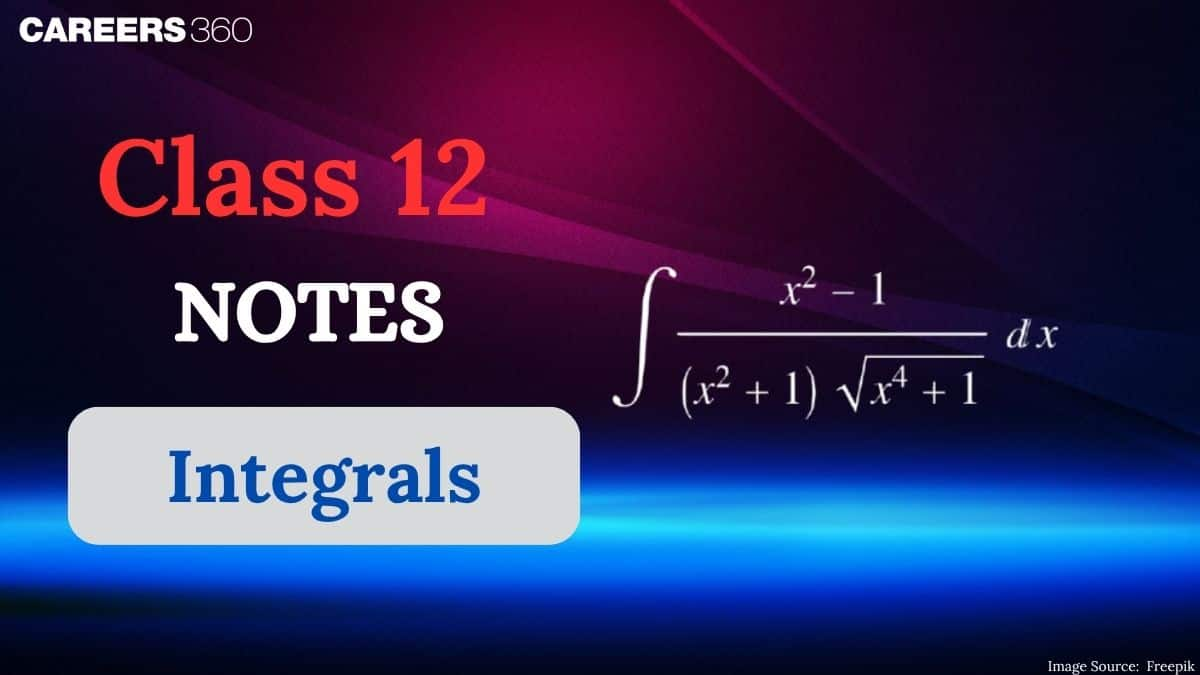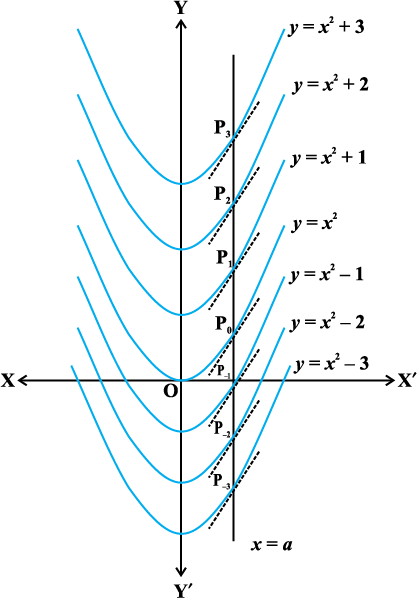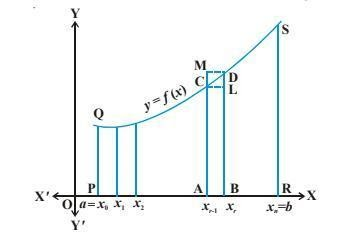Integrals 12th Notes - Free NCERT Class 12 Maths Chapter 7 Notes - Download PDF
Have you ever thought about how we calculate the area under a curve? Total accumulation of any quantity over a period of time? Or the total distance travelled by a moving object with different speeds? Welcome to the world of Integrals, one of the most important concepts in calculus. These NCERT Class 12 Maths Chapter 7 Notes contain the concepts of Integration as an Inverse Process of Differentiation, Indefinite Integrals, Methods of Integration, Definite Integrals, Fundamental Theorems of Calculus, and many more. These concepts will help the students grasp more advanced calculus topics easily and will also enhance their problem-solving ability in real-world applications. The main purpose of these NCERT Notes is to provide students with an efficient study material from which they can revise the entire chapter.
This Story also Contains
- Integrals Class 12 Notes Free PDF Download
- NCERT Notes for Class 12 Chapter 7 Integrals
- How to Use the Integrals Class 12 Notes Effectively?
- Integrals Class 12 Notes: Previous Year Question and Answer
- NCERT Class 12 Maths Notes Chapter-Wise Links

This article on NCERT notes Class 12 Maths Chapter 7 Integrals offers well-structured NCERT notes to help the students grasp the concepts of integration easily. Students who want to revise the key topics of Integrals quickly will find these NCERT Class 12 Maths Notes very useful. It will also boost the exam preparation of the students by many folds. These notes are made by the Subject Matter Experts at Careers360 according to the latest NCERT syllabus, ensuring that students can grasp the basic concepts effectively. Check this NCERT article for complete syllabus coverage along with NCERT Books, Solutions, Syllabus, and Exemplar Problems with Solutions.
Also read,
Integrals Class 12 Notes Free PDF Download
Use the link below to download the PDF version of NCERT Class 12 Maths Chapter 7 Note for free. After that, you can view the PDF anytime you desire without internet access. It is very useful for revision and last-minute studies.
NCERT Notes for Class 12 Chapter 7 Integrals
Careers360 has prepared these NCERT Class 12 Maths Chapter 7 Notes to make your revision smoother and faster.
Adding or summing up the small parts to find the whole sum of the function is the basic meaning of integral calculus.
Indefinite integrals and definite integrals are the two types of integrals that are found in integral calculus.
Indefinite Integral
Thus, the formula that gives this anti-derivative is called the indefinite integral.
Integration as an Inverse Process of Differentiation
Integration is defined as the inverse of differentiation. Here, we are given a function and asked to find its primitive (the original function). Such a process is called an anti-derivative or indefinite integral.
Let us see an example:
We know that
$\frac{d}{d x}(\sin x+c)=\cos x$
$⇒\int \cos x d x=\sin x+c$
Here, the actual function is “sinx + c”. Using the indefinite integral, we found the actual equation from the derived one.
Thus, we came to know that the integration of some functions is written as
$\int f(x) d x=F(x)+c$
Here, f(x) is “integrand”, f(x)dx is “element of integration”, $x$ is “variable of integration” and “c” is the integration constant.
Some of the formulas are listed below, which will help us solve the problems.
$\begin{aligned}
& \int x^n d x=\frac{x^{n+1}}{n+1}+c,(n \neq-1) \\
& \int d x=x+c \\
& \int \cos x d x=\sin x+c \\
& \int \sin x d x=-\cos x+c \\
& \int \sec ^2 x d x=\tan x+c \\
& \int \operatorname{cosec}^2 x d x=-\cot x+c \\
& \int \sec x \tan x=\sec x+c \\
& \int \operatorname{cosec} x \cot x=-\operatorname{cosec} x+c \\
& \int \frac{d x}{\sqrt{1-x^2}}=\sin ^{-1} x+c \\
& \int \frac{d x}{\sqrt{1-x^2}}=-\cos ^{-1} x+c \\
& \int \frac{d x}{1+x^2}=\tan ^{-1} x+c \\
& \int \frac{d x}{1+x^2}=-\cot ^{-1} x+c \\
& \int \frac{d x}{x \sqrt{x^2-1}}=\sec ^{-1} x+c \\
& \int \frac{d x}{x \sqrt{x^2-1}}=-\operatorname{cosec}^{-1}+c \\
& \int e^x d x=e^x+c \\
& \int \frac{1}{x} d x=\log |x|+c \\
& \int a^x d x=\frac{a^x}{\log a}+c
\end{aligned}$
Geometrical Interpretation of Indefinite Integral
Let us assume that y=f(x) be a curve such that $f^{\prime}(x)=2 x \Rightarrow f(x)=x^2+c$

Now, if we give values like 4, 3, 2, 1, 0, -1, -2, -3 to the arbitrary constant c, then the equation will give
$y=x^2+4, x^2+3, x^2+2, x^2+1, x^2, x^2-1, x^2-2, x^2-3$ṣ
having loci as a parabola.
Thus, the equation $\int f(x) d x=F(x)+c=y$ represents a family of curves.
Some properties of the indefinite integral
Here we shall derive some properties of indefinite integrals.
(I) The processes of integration and differentiation are inverse of each other in the sense of the following results:
$\frac{d}{d x} \int f(x) d x=f(x)$ and $\int f^{\prime}(x) d x=f(x)+c$
where c is the arbitrary constant.
(II) Two indefinite integrals with the same derivative lead to the same family of curves; thus, they are equivalent.
$\frac{d}{d x} \int f(x) d x=\frac{d}{d x} \int g(x) d x$
(III) $\int[f(x)+g(x)] d x=\int f(x) d x+\int g(x) d x$
(IV) For any real number $\mathrm{k}, \int k f(x) d x=k \int f(x) d x$
(V) Using properties (III) and (IV) can be generalised to a finite number of functions $f_1, f_2, f_3, …, f_n$ and the real numbers $k_1, k_2, k_3, …, k_n$ give
$\begin{aligned} & \int\left[k_1 f_1(x)+k_2 f_2(x)+\ldots k_n f_n(x)\right] d x \\ = & \int k_1 f_1(x) d x+\int k_2 f_2(x) d x+\ldots \int k_n f_n(x) d x\end{aligned}$
Example:
Find the anti-derivative (integral) of $\frac{1}{x}, \quad x \neq 0$
Solution:
We know that $\frac{d}{d x}(\log x)=\frac{1}{x}, x>0$ and $\frac{d}{d x}(\log (-x))=\frac{1}{-x}(-1)=\frac{1}{x}, x<0$
Thus, combining the above $\frac{d}{d x} \log x=\frac{1}{x}, x \neq 0$
Therefore, $\frac{1}{x} d x=\log |x|+c$
Methods of Integration
We have many ways of solving integration. Mostly, we solve by using:
-
Integration by substitution
-
Integration by Partial Fraction
-
Integration by Parts
Integration by Substitution
The given integral $\int f(x) d x$ can be transferred into another form by changing the independent variable x to t by substituting $\mathrm{x}=\mathrm{g}(\mathrm{t})$.
Let us assume that
$I=\int f(x) d x$
Substitute
$x=g(t)$, so that $\frac{dx}{dt}=g'(t)$
Then we write $dx=g’(t) dt$
Thus $\quad I=\int f(x) d x=\int f(g(t)) g^{\prime}(t) dt$
Example: Integrate w.r.t x, sin mx
Solution:
We know that by differentiating mx, we get m. Thus, we can substitute mx = t so that mdx =dt
Thus $\int \sin (m x) d x=\int \frac{1}{m} \sin (t) d t=-\frac{1}{m} \cos t+c=-\frac{1}{m} \cos m x+c$
Integration by Trigonometric Identities
The identities are used to find the integral when integration involves some trigonometric functions.
Example: Find $\int \cos ^2 x d x$
Solution: We know that
$\cos ^2 x=\frac{1+\cos 2 x}{2}$
Using this, we get that
$\cos ^2 x d x=\frac{1}{2}(1+\cos 2 x) d x=\frac{1}{2}[d x+\cos 2 x d x]=\frac{x}{2}+\frac{1}{4} \sin 2 x+c$
Integrals of Some Particular Function
Some of the formulas are listed below
$\begin{aligned}
& \int \frac{d x}{x^2-a^2} d x=\frac{1}{2 a} \log \frac{|x-a|}{|x+a|}+c \\
& \int \frac{d x}{a^2-x^2}=\frac{1}{2 a} \log \frac{|a+x|}{|a-x|}+c \\
& \int \frac{d x}{x^2+a^2}=\frac{1}{a} \tan ^{-1} \frac{x}{a}+c \\
& \int \frac{d x}{\sqrt{x^2-a^2}}=\log \left|x+\sqrt{x^2-a^2}\right|+c \\
& \int \frac{d x}{\sqrt{x^2+a^2}}=\log \left|x+\sqrt{x^2+a^2}\right|+c \\
& \int \frac{d x}{\sqrt{a^2-x^2}}=\sin ^{-1} \frac{x}{a}+c
\end{aligned}$
Let us see an example
$\begin{aligned}
& \int \frac{d x}{\left(4+9 x^2\right)} d x \\
& =\int \frac{d x}{9\left(\frac{4}{9}+x 2\right)}
\end{aligned}$
Now using a special formula
$\begin{aligned}
& \int \frac{d x}{x^2+a^2}=\frac{1}{a} \tan ^{-1} \frac{x}{a}+c \\
& =\frac{1}{9} \int \frac{d x}{x^2+\left(\frac{2}{3}\right)^2} \\
& =\frac{1}{9} \frac{1}{\frac23} \tan ^{-1} \frac{3 x}{2}+c \\
& =\frac{1}{6} \tan ^{-1} \frac{3 x}{2}+c
\end{aligned}$
Integration by Partial Fraction
The integration of a rational function can be solved by using partial fractions.
$\begin{array}{|l|l|l|}
\hline \text { S.No. } & \text { Form of a rational function } & \text { Formation of a partial function } \\
\hline 1 & \frac{p x+q}{(x-a)(x-b)}, a \neq b & \frac{A}{x-a}+\frac{B}{x-b} \\
\hline 2 & \frac{p x+q}{(x-a)^2} & \frac{A}{x-a}+\frac{B}{(x-a)^2} \\
\hline 3 & \frac{p x^2+q x+r}{(x-a)(x-b)(x-c)} & \frac{A}{x-a}+\frac{B}{x-b}+\frac{C}{x-c} \\
\hline 4 & \frac{p x^2+q x+r}{(x-a)^2(x-b)} & \frac{A}{x-a}+\frac{B}{(x-a)^2}+\frac{C}{x-b} \\
\hline 5 & \frac{p x^2+q x+r}{(x-a)\left(x^2+b x+c\right)} & \frac{A}{x-a}+\frac{B x+c}{x^2+b x+c} \\
\hline
\end{array}$
Let us see the following example
$\begin{aligned}
& \int \frac{x^2}{x^2+x+6} d x \\
& =\int\left(1-\frac{x-6}{x^2+x+6} d x\right. \\
& =\int d x-\int \frac{x-6}{x 2+x+6} d x \\
& =x-\frac{9}{5} \int \frac{d x}{x+3}+\frac{4}{5} \int \frac{d x}{x-2} \\
& =x-\frac{9}{5} \ln |x+3|+\frac{4}{5} \ln |x-2|+c
\end{aligned}$
Integration by Parts
The ILATE rule needs to be followed while doing integration by parts. According to the ILATE rule, we can determine which function will be the 1st function and which will be the 2nd function.
ILATE
I → Inverse function
L → Logarithmic function
A → Algebraic function
T → Trigonometric function
E → Exponential function
From the above rule, as an example, we can say that there are two functions, like trigonometric functions and logarithmic functions. The logarithmic function will be treated as the first function, and the trigonometric function will be treated as the second function.
The general expression follows as
$\int f(x) g(x) d x=f(x) \int g(x) d x-\int\left[\left\{\int g(x) d x\right\} \frac{d}{d x} f(x)\right] dx$
“The integral of the product of two functions = (1st function) × (integral of the 2nd function) – Integral of [(differential coefficient of the 1st function) × (integral of the 2nd function)]”
Example: Solve $\int \ln x d x$
Solution:
$\begin{aligned}
& \int \ln x \cdot 1 d x \\
& \Rightarrow \ln x \int 1 d x-\int\left[\left(\int 1 d x\right) \frac{d}{d x}(\ln x)\right] d x \\
& \Rightarrow x \ln x-\int x \cdot \frac{1}{x} d x \\
& \Rightarrow x \ln x-x+c
\end{aligned}$
Integration of special types of functions
The formulas are listed below
$\begin{aligned}
& \int \sqrt{x^2+a^2} d x=\frac{1}{2} x \sqrt{x^2+a^2}+\frac{a^2}{2} \log \left|x+\sqrt{x^2+a^2}\right|+c \\
& \int \sqrt{x^2-a^2} d x=\frac{1}{2} x \sqrt{x^2-a^2}+\frac{a^2}{2} \sin ^{-1} \frac{x}{a}+c
\end{aligned}$
Definite Integral
In the indefinite, we saw that the result of the integration was not a unique value. But here indefinite integral we will find a unique value, and it is well defined within a limited boundary. Generally, the definite integral is denoted by
$\int_a^b f(x) d x$
Her “a” is the lower limit, and “b” is the upper limit of the integral. The value of the definite integral is computed by F(b) - F(a).
Basically, in Definite integral consists of two cases as discussed below:
Definite Integral as a Limit of the Sum
If the definite integral $\int_a^b f(x) d x$
is the area bounded by the curve y = f(x), the ordinates x = a, x = b and the x-axis. To evaluate this area, consider the region PRSQP between this curve, the x-axis, and the ordinates x = a and x =b

From the figure, we find the general equation of the definite integral as a limit of a sum
$\begin{aligned}
&\begin{aligned}
\int_a^b f(x) d x & =h[f(a)+f(a+h)+\ldots+f(a+(n-1) h] \\
\Rightarrow \int_a^b f(x) d x & =\frac{(b-a)}{n}[f(a)+f(a+h)+\ldots+f(a+(n-1) h]
\end{aligned}\\
&\text { Where } h=\frac{b-a}{n} \rightarrow 0 \text { as } n \rightarrow \infty
\end{aligned}$
Some Properties of the Definite Integral
$P_0: \int_a^b f(x) d x=\int_a^b f(t) d t$
$P_1: \int_a^b f(x) d x=-\int_b^a f(x) d x ;$ in particular, $\int_a^a f(x) d x=0$
$P_2: \int_a^b f(x) d x=\int_a^c f(x) d x+\int_c^b f(x) d x$
$P_3: \int_a^c f(x) d x=\int_a^c f(a+b-x) d x$
$P_4: \int_0^b f(x) d x=\int_0^b f(b-x) d x$
$P_5: \int_0^{2 b} f(x) d x=\int_0^b f(x) d x+\int_0^b f(2 b-x) d x$
$P_6: \int_0^{2 b} f(x) d x=2 \int_0^b f(x) d x$ if $f(2 b-x)=f(x)$
and $\int_0^{2 b} f(x) d x=0 \quad$ if $\quad f(2 b-x)=-f(x)$
$P_7:(i) \int_{-a}^a f(x) d x=2 \int_0^a f(x) d x$, if f is even function, i.e., if $\mathrm{f}(-\mathrm{x})=\mathrm{f}(\mathrm{x})$
(ii) $\int_{-a}^a f(x) d x=0$, if f is odd function, i.e., $\mathrm{f}(-\mathrm{x})=-\mathrm{f}(\mathrm{x})$
Let us see an example
$\begin{aligned}
& \int_0^{\frac{\pi}{2}} \frac{\sqrt{\sin x}}{\sqrt{\sin x}+\sqrt{\cos x}} d x \\
& \text { Let } \int_0^{\frac{\pi}{2}} \frac{\sqrt{\sin x}}{\sqrt{\sin x}+\sqrt{\cos x}} d x=I-\cdots\cdots (1) \\
& I=\int_0^{\frac{\pi}{2}} \frac{\sqrt{\sin \left(\frac{\pi}{2}-x\right)}}{\sqrt{\sin \left(\frac{\pi}{2}-x\right)}+\sqrt{\cos \left(\frac{\pi}{2}-x\right)}} d x \\
& I=\int_0^{\frac{\pi}{2}} \frac{\sqrt{\cos x}}{\sqrt{\sin x}+\sqrt{\cos x}} d x\cdots\cdots\cdots (2)
\end{aligned}$
Now $(1)+(2)$
$\begin{aligned}
& \int_0^{\frac{\pi}{2}} \frac{\sqrt{\sin x}}{\sqrt{\sin x}+\sqrt{\cos x}} d x+\int_0^{\frac{\pi}{2}} \frac{\sqrt{\cos x}}{\sqrt{\sin x}+\sqrt{\cos x}} d x=2 I \\
& 2 I=\int_0^{\frac{\pi}{2}} d x \\
& I=\frac{\pi}{4}
\end{aligned}$
How to Use the Integrals Class 12 Notes Effectively?
Integrals is an important chapter of Class 12 Maths that helps us learn how to find areas, solve curves, and reverse the process of differentiation. It introduces many methods that we will use again and again in calculus. This chapter is very important for JEE, and studying from Class 12 Maths chapter 7 notes can make problem-solving much easier. Here are some more points on how these notes are important.
- Start by understanding integration as the inverse of differentiation, then move on to methods such as substitution, partial fractions, and integration by parts.
- Practice all types of questions, especially those on definite integrals and their properties, as these are common on exams.
- This chapter is very useful in higher studies and competitive exams, so regular revision using these NCERT Class 12 Maths chapter 7 notes will build a strong foundation in calculus.
- Solve NCERT examples and exercises after each topic to improve accuracy and get comfortable with all methods.
Integrals Class 12 Notes: Previous Year Question and Answer
Given below are some previous year question answers of various examinations from the NCERT class 12 chapter 7 Integrals:
Question 1: The integral $\int_{-1}^{\frac{3}{2}}\left(\left|\pi^2 x \sin (\pi x)\right|\right) \mathrm{dx}$ is equal to:
Solution:
$\begin{aligned} & I=\int_{-1}^{3 / 2}\left|\pi^2 x \sin (\pi x)\right| d x \\ &=\int_{-1}^1\left|\pi^2 x \sin (\pi x)\right| d x+\int_1^{3 / 2}\left|\pi^2 x \sin (\pi x)\right| d x \\ &=2 \int_0^1\left|\pi^2 x \sin (\pi x)\right| d x-\pi^2 \int_1^{3 / 2}|x \sin (\pi x)| d x\end{aligned}$
$\begin{aligned} & =2 \pi^2 \int_0^1|x \sin (\pi x)| d x-\pi^2 \int_1^{3 / 2}|x \sin (\pi x)| d x \\ & \because \int x \sin (\pi x) d x=x\left(\frac{-\cos \pi x}{\pi}\right)-\int \frac{-\cos \pi x}{\pi} d x \\ & =-\frac{x}{\pi} \cos \pi x+\frac{1}{\pi^2} \sin \pi x+C \\ & \therefore \quad I=2 \pi^2\left(\frac{1}{\pi}\right)-\pi^2\left(-\frac{1}{\pi^2}-\frac{1}{\pi}\right) \\ & =2 \pi+1+\pi \\ & =3 \pi+1\end{aligned}$
Hence, the correct answer is $3 \pi+1$.
Question 2: The value of $\int_{-1}^1 \frac{(1+\sqrt{|x|-x}) e^x+(\sqrt{|x|-x}) e^{-x}}{e^x+e^{-x}} d x$ is equal to:
Solution:
$\begin{aligned} & \mathrm{I}=\int_{-1}^1 \frac{(1+\sqrt{|-\mathrm{x}|-(-\mathrm{x})}) \mathrm{e}^{-\mathrm{x}}+(\sqrt{|-\mathrm{x}|-(-\mathrm{x})}) \mathrm{e}^{-(-\mathrm{x})}}{\mathrm{e}^{-\mathrm{x}}+\mathrm{e}^{-(-\mathrm{x})}} \mathrm{dx} \\ & \Rightarrow \mathrm{I}=\int_{-1}^1 \frac{(1+\sqrt{|\mathrm{x}|+\mathrm{x}}) \mathrm{e}^{-\mathrm{x}}+(\sqrt{|\mathrm{x}|+\mathrm{x}}) \mathrm{e}^{\mathrm{x}}}{\mathrm{e}^{\mathrm{-x}}+\mathrm{e}^{\mathrm{x}}} \mathrm{dx}\end{aligned}$
$\begin{aligned} & \Rightarrow 2 \mathrm{I}=\int_{-1}^1 \frac{(1+\sqrt{|\mathrm{x}|+\mathrm{x}}+\sqrt{|\mathrm{x}|-\mathrm{x}})\left(\mathrm{e}^{\mathrm{x}}+\mathrm{e}^{-\mathrm{x}}\right)}{\left(\mathrm{e}^{\mathrm{x}}+\mathrm{e}^{-\mathrm{x}}\right)} \mathrm{dx} \\ & \Rightarrow 2 \mathrm{I}=\int_{-1}^1(1+\sqrt{|\mathrm{x}|+\mathrm{x}}+\sqrt{|\mathrm{x}|-\mathrm{x}}) \mathrm{dx}\end{aligned}$
$\begin{aligned} & \Rightarrow 2 \mathrm{I}=2 \int_0^1(1+\sqrt{|\mathrm{x}|+\mathrm{x}}+\sqrt{|\mathrm{x}|-\mathrm{x}}) \mathrm{dx} \\ & \Rightarrow 2 \mathrm{I}=2 \int_0^1(1+\sqrt{2 \mathrm{x}}+\sqrt{0}) \mathrm{dx}\end{aligned}$
$\begin{aligned} & \Rightarrow \mathrm{I}=\int_0^1(1+\sqrt{2 \mathrm{x}}) \mathrm{dx}=\left[\mathrm{x}+\frac{2 \sqrt{2}}{3} \mathrm{x}^{3 / 2}\right]_0^1 \\ & \Rightarrow \mathrm{I}=\frac{2 \sqrt{2}}{3}+1\end{aligned}$
Hence, the correct answer is $\frac{2 \sqrt{2}}{3}+1$.
Question 3: The integral $\int_0^\pi \frac{8 x d x}{4 \cos ^2 x+\sin ^2 x}$ is equal to
Solution:
$I=\int_0^\pi \frac{8 x d x}{4 \cos ^2 x+\sin ^2 x}$
Apply property
$I=\int_0^\pi \frac{8(\pi-x) d x}{4 \cos ^2 x+\sin ^2 x}$
Add
$\begin{aligned}
& 2 I=\int_0^\pi \frac{8 \pi}{4 \cos ^2 x+\sin x} d x \\
& I=4 \pi \int_0^\pi \frac{1}{4 \cos ^2 x+\sin ^2 x}
\end{aligned}$
$\begin{aligned} & \because \frac{1}{4 \cos ^2 x+\sin ^2 x}=\frac{1}{4 \cos ^2(\pi-x)+\sin ^2(\pi-x)} \\ & \therefore I=4 \pi \times 2 \int_0^{\pi / 2} \frac{1}{4 \cos ^2 x+\sin ^2 x} d x \\ & =8 \pi \int_0^{\pi / 2} \frac{\sec ^2 x d x}{4+\tan ^2 x} \\ & \text { let } \tan x=t \\ & \sec ^2 x d x=d t \\ & =8 \pi \int_0^{\infty} \frac{d t}{4+t^2} \\ & =\frac{8 \pi}{2}\left[\tan ^{-1} t\right]_0^{\infty} \\ & = \frac{8 \pi}{2}(\pi / 2-0) \\ & = \frac{4 \pi^2}{2} = 2 \pi^2\end{aligned}$
Hence, the correct answer is $2 \pi^2$.
NCERT Class 12 Maths Notes Chapter-Wise Links
To help students in their preparation, Careers360 has compiled all Class 12 Maths NCERT notes in one place for easy and quick access.
Subject-Wise NCERT Exemplar Solutions
After finishing the textbook exercises, students can use the following links to check the NCERT exemplar solutions for a better understanding of the concepts.
- NCERT Exemplar Class 12 Solutions
- NCERT Exemplar Class 12 Maths
- NCERT Exemplar Class 12 Physics
- NCERT Exemplar Class 12 Chemistry
- NCERT Exemplar Class 12 Biology
Subject-Wise NCERT Solutions
Students can also check these well-structured, subject-wise solutions of class 12.
- NCERT Solutions for Class 12 Mathematics
- NCERT Solutions for Class 12 Chemistry
- NCERT Solutions for Class 12 Physics
- NCERT Solutions for Class 12 Biology
NCERT Books and NCERT Syllabus
Before starting a new academic year, students should refer to the latest syllabus to see the chapters they’ll be studying. Given below are the updated syllabus links along with some reference books.
Frequently Asked Questions (FAQs)
Yes, these NCERT Class 12 Maths Chapter 7 Notes are completely based on the latest NCERT Class 12 Maths syllabus and follow the guidelines.
Yes, many educational platforms, such as Careers360, offer free downloadable PDFs of Class 12 Integrals Notes. Students can find the free downloadable PDF in this article itself.
These NCERT Class 12 Maths Chapter 7 Notes are curated by subject experts at Careers360, ensuring accuracy, clarity, and alignment with the NCERT Class 12 syllabus. These NCERT notes are trustworthy and reliable, making them an essential resource for exam preparation.
An indefinite integral represents a family of functions (without limits), while a definite integral represents a numerical value that gives the area under a curve between two limits.
Integrals are used in calculating areas, volumes, distances, probabilities, and even in physics for finding work done and electric charge distributions.
Courses After 12th
Applications for Admissions are open.
As per latest syllabus. Physics formulas, equations, & laws of class 11 & 12th chapters
JEE Main Important Chemistry formulas
Get nowAs per latest syllabus. Chemistry formulas, equations, & laws of class 11 & 12th chapters
JEE Main high scoring chapters and topics
Get nowAs per latest 2024 syllabus. Study 40% syllabus and score upto 100% marks in JEE
JEE Main Important Mathematics Formulas
Get nowAs per latest syllabus. Maths formulas, equations, & theorems of class 11 & 12th chapters
